Microcapsules for Food and Cosmetic Industries
Microencapsulation of Thyme Oil in PLA Shell by Coacervation
Microcapsules of polylactide-containing thyme oil are produced by coacervation using a variety of nonionic surfactants with different hydrophilic-lipophilic balance (HLB) values and the encapsulation efficiency of polar and apolar compounds of oil evaluated. Thus, Tween 20, Tween 80, Tergitol 15-S-9, and a combination of Tergitol 15-S-9 with Span 85 have been used. The HLB value was comprised between 11 and 16.5.
For all the studied cases, microcapsules are spherical in shape and have bimodal particle size distribution with mean size between 30 and 40 μm. The amount of encapsulated thyme oil reaches a maximum of 65% for Tergitol 15-S-9, a polyglycol ether surfactant with a HLB value of 13.3. The results confirm the dependence of the encapsulation efficiency as result of the hydrophobic properties of the surfactants. Moreover, it was confirmed a preferential encapsulation of apolar compounds of thyme oil in detriment of polar ones.
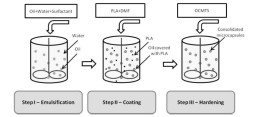
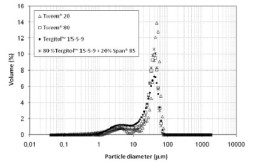
I.M. Martins, M.F. Barreiro, M. Coelho, A.E. Rodrigues. Microencapsulation of essential oils with biodegradable polymeric carriers for cosmetic applications. Chemical Engineering Journal, 245, 191-200, 2014
I.M. Martins, S.N. Rodrigues, M.F. Barreiro, A.E. Rodrigues. Release Studies of Thymol and p-Cymene from Polylactide Microcapsules. Industrial & Engineering Chemistry Research, 51, 11565-11571, 2012
I.M. Martins, S.N. Rodrigues, M.F. Barreiro, A.E. Rodrigues. Polylactide-based thyme oil microcapsules production: Evaluation of surfactants. Industrial and Engineering Chemistry Research, 50, 898-904, 2011
I.M. Martins, S.N. Rodrigues, M.F. Barreiro, A.E. Rodrigues. Release of thyme oil from polylactide microcapsules. Industrial and Engineering Chemistry Research, 50, 13752-13761, 2011
I.M. Martins, S.N. Rodrigues, F. Barreiro, A.E. Rodrigues. Microencapsulation of thyme oil by coacervation. Journal of Microencapsulation, 26, 667-675, 2009
Microencapsulation of Bioactives for Food Applications
Bioactive ingredients are generally prone to degradation, both during storage and food processing, as many of them are physically, chemically and/or enzymatically unstable leading to their degradation or transformation with the consequent loss of bioactivity. In this context, microencapsulation emerges as a viable approach to overcome these problems and, additionally, to provide controlled or targeted delivery or release. Develop a microencapsulation process to be used with food ingredients presents some constrains and challenges, as the raw materials and processes must be properly selected to avoid toxicity, conform food contact legislation, and provide adequate performance to the produced microencapsulated systems. Also, choose technologies and processes able to reach high TRLs and perform final incorporation tests are of high relevance.
The processes and chemical systems studied so far are: Spray-drying using maltodextrin or maltodextrin crosslinked with citric acid; Spray-coagulation using alginate and chitosan; and Complex coacervation with chitosan/whey protein.
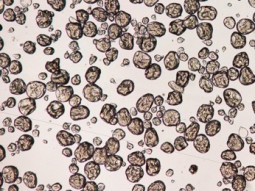
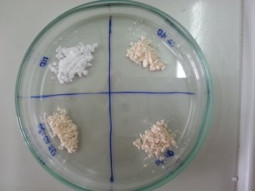

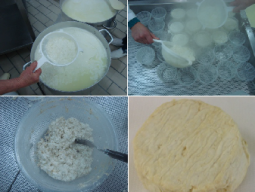
F.S. Oliveira, A. Ribeiro, L. Barros, R. Calhelha, J.C.M. Barreira, B.D. Junior, R.M.V. Abreu, M.F. Barreiro, I.C.F.R. Ferreira. Evaluation of Arenaria montana L. hydroethanolic extract as a chemopreventive food ingredient: A case study focusing a dairy product (yogurt). Jornal of Functional Foods, 38, 214-220, 2017
A. Ribeiro, C. Caleja, L. Barros, C. Santos-Buelga, M.F. Barreiro, I.C.F.R. Ferreira. Rosemary extracts in functional foods: Extraction, chemical characterization and incorporation of free and microencapsulated forms in cottage cheese. Food and Function, 7, 2185-2196, 2016
I. Rached, L. Barros, I.P. Fernandes, C. Santos-Buelga, A.E. Rodrigues, A. Ferchichi, M.F. Barreiro, I.C.F.R. Ferreira. Ceratonia siliqua L. hydroethanolic extract obtained by ultrasonication: Antioxidant activity, phenolic compounds profile and effects in yogurts functionalized with their free and microencapsulated forms. Food and Function, 7, 1319-1328, 2016
C. Caleja, A. Ribeiro, L. Barros, J.C.M. Barreira, A.L. Antonio, M.B.P.P. Oliveira, M.F. Barreiro, I.C.F.R. Ferreira. Cottage cheeses functionalized with fennel and chamomile extracts: Comparative performance between free and microencapsulated forms. Food Chemistry, 199, 720-726, 2016
A. Ribeiro, G. Ruphuy, J.C. Lopes, M.M. Dias, L. Barros, F. Barreiro, I.C.F.R. Ferreira. Spray-drying microencapsulation of synergistic antioxidant mushroom extracts and their use as functional food ingredients. Food Chemistry, 188, 612-618, 2015
A. Martins, L. Barros, A.M. Carvalho, C. Santos-Buelga, I.P. Fernandes, F. Barreiro, I.C.F.R. Ferreira. Phenolic extracts of Rubus ulmifolius Schott flowers: Characterization, microencapsulation and incorporation into yogurts as nutraceutical sources. Food and Function, 5, 1091-1100, 2014
Microencapsulation of Natural Extracts for Cosmeceutical Design
Natural extracts represent rich sources of biologically active compounds with recognized potential for the development of cosmetics or cosmeceuticals. They represent interesting alternatives for the cosmetic industry that is constantly in search for novel ingredients with less toxic effects and multifunctional properties. However, the use of natural extracts has constraints related with the lack of stability and ease degradation of some of their metabolites. These drawbacks can be overcome through the application of microencapsulation techniques, enabling protection and also ensuring controlled or target oriented release. The development of a microencapsulation process to encapsulate ingredients for cosmeceuticals must have into account the use of non-toxic raw materials and be in accordance with the legal regulations. Additionally, performance evaluation of the microencapsulated ingredients, after incorporation on the final products, is of high relevance.
The processes and chemical systems studied so far are: Double emulsion/evaporation technique using polycaprolactone (PCL) and spray-coagulation using alginate and chitosan matrices.
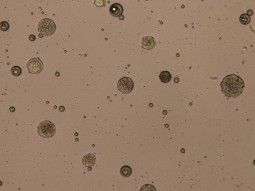
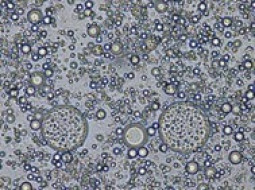
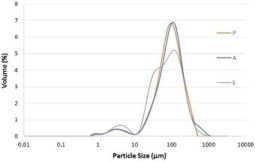
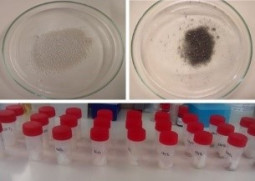
O. Taofiq, A.M. González-Paramás, M.F. Barreiro, I.C.F.R. Ferreira, D.J. McPhee. Hydroxycinnamic acids and their derivatives: Cosmeceutical significance, challenges and future perspectives, a review. Molecules, 22, 281-305, 2017
O. Taofiq, S.A. Heleno, R.C. Calhelha, M.J. Alves, L. Barros, M.F. Barreiro, A.M. González-Paramás, I.C.F.R. Ferreira. Development of Mushroom-Based Cosmeceutical Formulations with Anti-Inflammatory, Anti-Tyrosinase, Antioxidant, and Antibacterial Properties. Molecules, 21, 1372, 2016
O. Taofiq, A.M. González-Paramás, A. Martins, M.F. Barreiro, I.C.F.R. Ferreira. Mushrooms extracts and compounds in cosmetics, cosmeceuticals and nutricosmetics-A review. Industrial Crops and Products, 90, 38-48, 2016
M.R. Barroso, L. Barros, M. Dueñas, A.M. Carvalho, C. Santos-Buelga, I.P. Fernandes, M.F. Barreiro, I.C.F.R. Ferreira. Exploring the antioxidant potential of Helichrysum stoechas (L.) Moench phenolic compounds for cosmetic applications: Chemical characterization, microencapsulation and incorporation into a moisturizer. Industrial Crops and Products, 53, 330-336, 2014




